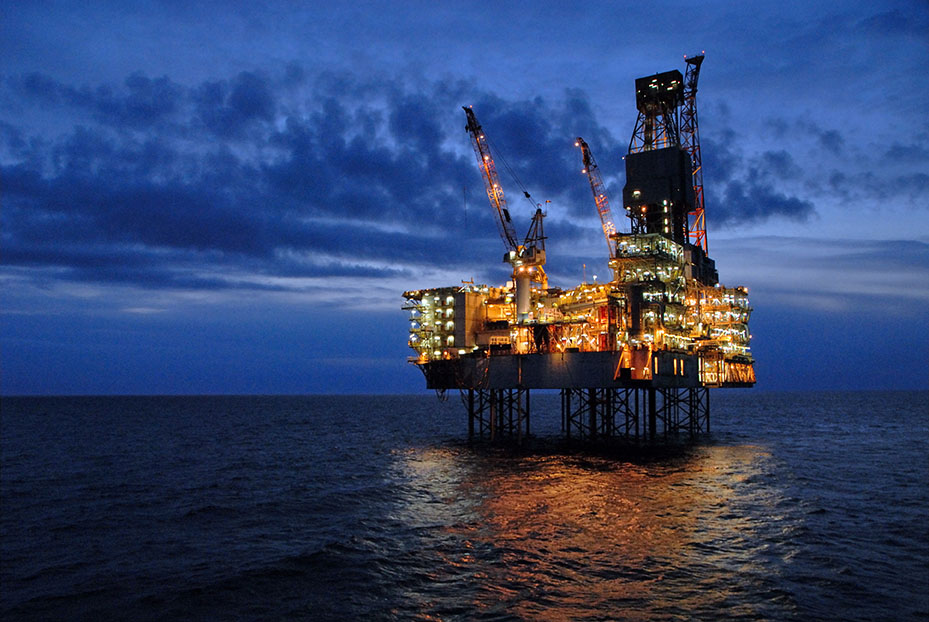Joint Fields
Iran is keen to participate in the development of the Caspian Sea gas fields, and is cooperating with Azerbaijan for a decade to develop the Shah Deniz gas field in Azerbaijan.
The gas field holds over one trillion cubic meters of recoverable gas reserves. Currently, it produces 27 million cubic meters of gas and 50,000 barrels of condensates per day in the first phase. Iran has a 10 percent share in the project.
The second phase of the gas field is projected to come on stream by 2018-2019, increasing the gas output by 16 billion cubic meters annually. So, the first and the second phases of the field will produce 25 billion cubic meters of gas. Plans are to export the second phase’s gas output to Turkey and Europe.
Iran shares the Gonbadli gas field with Turkmenistan and has disputation over Alborz section in Caspian Sea with Azerbaijan.
Gas Export
Zanganeh also referred to the issue of exporting natural gas to Europe through establishing a pipeline. The second phase of the Shah Deniz has envisioned the establishment of a pipeline that will pass through Azerbaijan and Georgia to reach Turkey. Then, the Trans Anatolian Natural Gas Pipeline (TANAP) will transfer gas to western part of Turkey and the Trans Adriatic Pipeline (TAP) will transfer gas to Eastern Europe and eventually to Italy.
Earlier, Iranian gas was supposed to be transferred to Europe via the Nabacco Pipeline, which was replaced by the TAP. But, sanction on the country’s energy sector has hindered the plan. If the EU sanctions on Iran are lifted, Iranian gas can join TAP.
Gas Storage
Iran’s gas production in winter is less than the country’s consumption. But in summer it produces several billion cubic meters of surplus gas. The country stores some of the surplus gas in Shoorijeh and Sarajeh gas storage facilities to pump to the national gas network in winter. The facilities’ stored gas stood at 2 billion cubic meters in autumn.
Azerbaijan has two natural gas storage facilities, Kalmaz and Garadag, with the total capacity of 5 billion cubic meters. The two facilities currently store only 3 billion cubic meters of gas, so Iran can store around 2 billion cubic meters of its surplus gas in the facilities, and receive them back in winter.
Joint Investments
Azerbaijan invested $12 billion in foreign countries in the previous year. TANAP will be constructed mainly with Azerbaijan’s finance. Baku and Ankara have also signed several billion dollars worth of contracts for developments of downstream projects in the oil and gas sector (including petrochemical and refinery, pipeline, etc). Iran can take part and gain shares in the projects.
Oil and Gas Cooperation
According to Zanganeh, Tehran welcomes Baku and the State Oil Company of Azerbaijan Republic (SOCAR) to take part in the development projects of Iranian oil and gas fields, as well as the country’s petrochemical sector.
“Iranian investors are also willing to invest in Azeri projects,” he said.
Iran announced in 2011 that while drilling a 1,000-meter well below the surface of the Caspian Sea, the country found a gas field at a depth of 700 kilometers. A year later Tehran announced the field was in fact an oil field with a gas layer.
Seismic vessels owned by Azerbaijan can help Iran carry out further exploratory operations.
Zanganeh also said that the two countries have not negotiated about buying gas from Azerbaijan. “We currently swap gas.”
Azerbaijan sends 1.2 million cubic meters of gas per day to Iran. Tehran reduces its share and delivers one million cubic meters to Nakhchivan.


